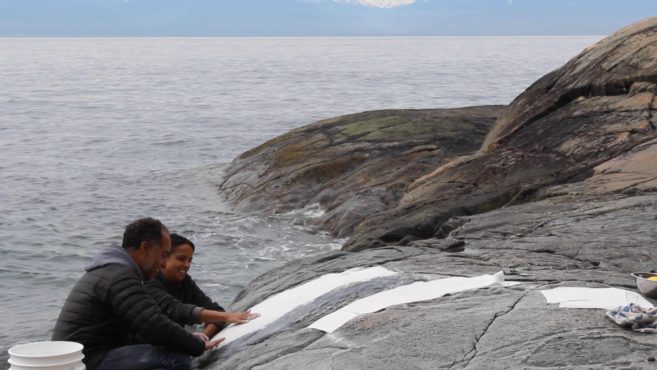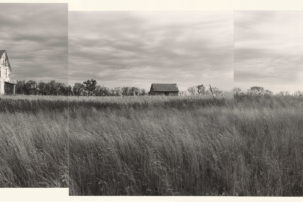Tiffany Shaw-Collinge: Douglas, I know that you have always done a lot of work around healing, which I consider an antimatter concept: a Cree bottom-up approach, in terms of ways of knowing, being and doing. How has your practice changed over time while still maintaining a focus on health and well-being?
Douglas Cardinal: Antimatter comes from a different worldview—the worldview that colonized this land and its people. It’s all about power and controlling nature and people’s nature, and forcefully making people do and think according to a very powerful hierarchical system of the church and state. A colonial worldview is not about people or the environment or the land itself. It is about dominion over nature. Colonial worldviews are in contrast to our worldviews about respecting all life, respecting nature and respecting that we are nature. Indigenous antimatter is not about power and control. Antimatter is respecting people and asking them what their vision is, how they want to live and how they want to grow and develop in the way that suits them. Indigenous antimatter is how to treat our mother, the earth, in the same manner, and to respect all life. The colonial worldview is a virus that invades the earth and, like any virus, it’s making the host sick. We can’t disconnect ourselves from that reality. Some are reminded every month that they follow the cycles of the moon and the earth. They’re reminded when they give birth and bring a child into the world how important it is to be able to love and care for another human being. This is why colonialism has to destroy women’s power; matriarchy is antimatter. The problem of murdered women and girls in the Indigenous community is because colonial society is based on apartheid and genocide. The federal inquiry into missing and murdered Indigenous women wanted the Prime Minister to understand and acknowledge genocide. The Prime Minister had a very difficult time acknowledging that this inquiry made Canada, and all the settlers who are here, parties to genocide and apartheid. Why should I create buildings that are monuments to that culture?
TSC: I know that with Native thinking we’re always trying to propel circular responses in terms of past, present and future. How do you think about mentorship, the influence you have now, in terms of the matriarchial approach in architecture today? You collaborate with a lot of visionary women who are clients, such as the Wabano Centre for Aboriginal Health in Ottawa. But I’m also curious about how you see your role within the field, to captivate people like me and other Indigenous women who are also trying to follow this path.
DC: Women should be involved in the vision sessions and developing the vision of the building. They should also be involved in every decision throughout the architectural process, because I feel that it’s the women who have the responsibility of raising the future and therefore they should call the shots. Traditionally it was women who made the decisions in the home, in the community and on behalf of the nation. The institutions and structures of this society are all patriarchal. We as men have to support the traditional position of the women, who are our clan mothers and who make the decisions.
TSC: I loved, Douglas, when you recently recounted a story to Kehewin Cree Nation’s Chief and Council and me about Chief Theresa Gadwa, who was a chief for Kehewin in the 1970s. You told us how she hired you to design and build one of the first on-reserve schools in Canada. You created this amazing imagery of how strong she was, often referring to her as a bear and as having fought against the government’s protocols when you were asking for this school from Indian Affairs. I think that incredible story speaks to all the things you are saying about the power of women and what they can do to move these mountains of colonialism.
DC: Chief Theresa Gadwa’s work on on-reserve schools created a precedent in all Indian schools in Canada, so that they could have control of their own education. Women voted her in as chief because they were sick and tired of the men not following their direction. Chief Gadwa called me up and asked me to support her getting a school on the reserve, which we did. And we took on the whole government. She totally intimidated them. I mean Jean Chrétien, who was Minister of Indian Affairs and Northern Development at the time, told one of his staff to go and tell her that she couldn’t have a school for children—because he wouldn’t tell her himself. Chief Gadwa just sat there growling like a bear. When the staff person went over to her to tell her she couldn’t have the school, he couldn’t face her. He just turned around and walked out. And then later, Chrétien told Chief Gadwa, “You got your school.” And that was it.








